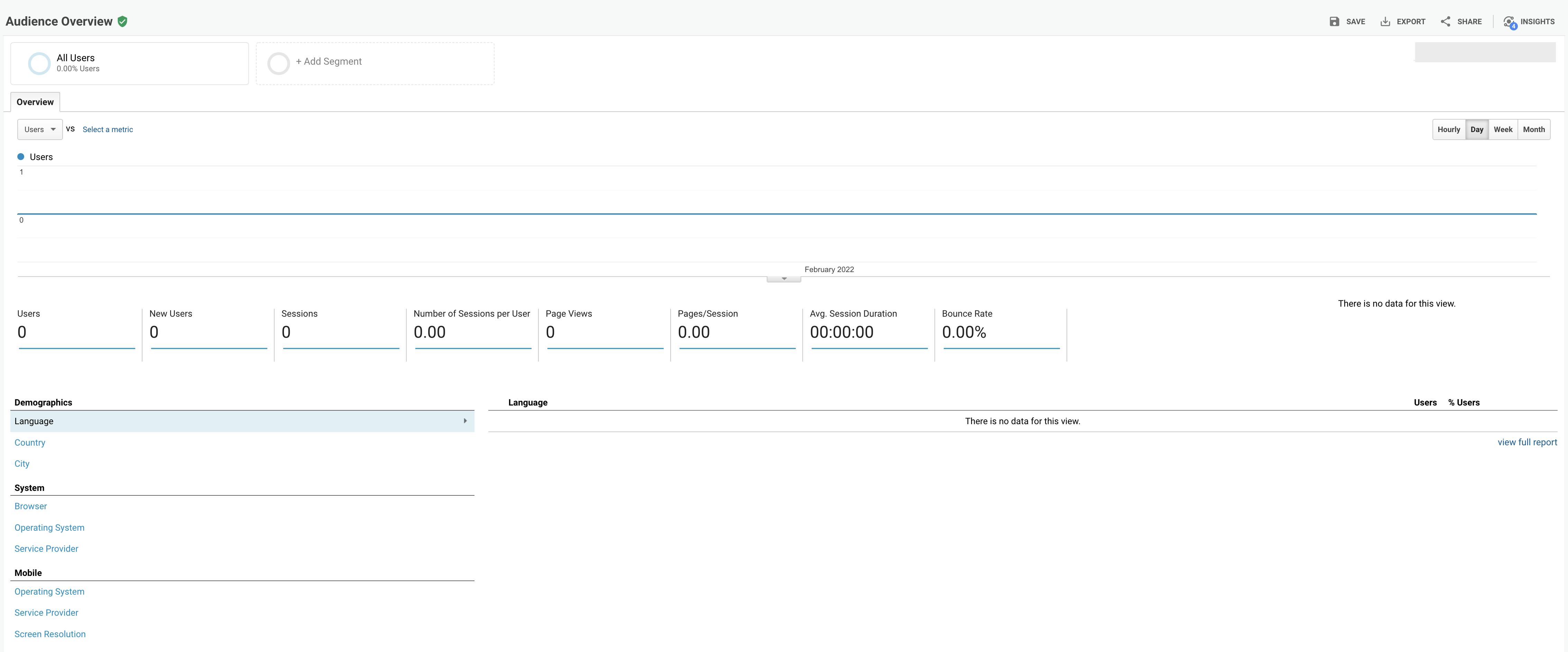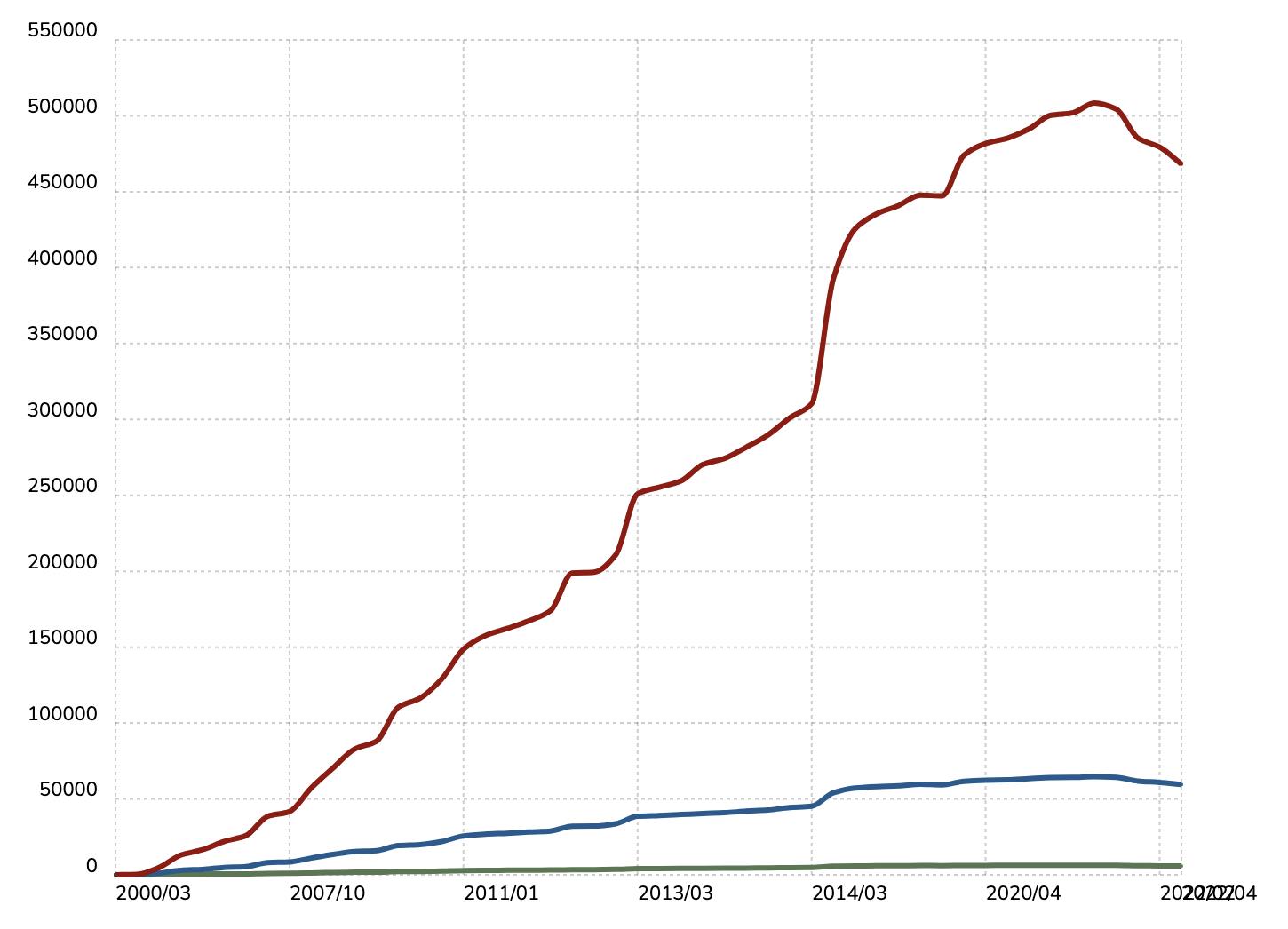GA4: revolution not evolution
It’s true to say we’re approaching a potentially vital turning point in the reporting of your website and you might not even know it.
I don’t want to alarm you too much but this time next year you could be seeing this when you login to your Google Analytics account.

Yikes!
In this article we discuss the upcoming arrival of the much-discussed GA4 reporting iteration of Google Analytics and what it could mean for your data.
A bit of context
Google Analytics is the reporting behemoth that changed the game. Owners of sites of all sizes and sectors can today accurately judge the performance of their online presence with this free bit of software. Its popularity reflects its value, with over 60% of all the top 100,000 sites with the highest traffic volume on the web utilising it.
However, note the graph below and its drop off in recent years.

While there are other reasons this dip may have occurred (namely the cookie quandary as regards EU law discussed later in this article), we do also wonder whether another bit of news has caused some to question their reporting choices.
Introducing GA4
GA4 is the latest version of Google Analytics, launched in October 2020 and is now the default version when setting up a website with GA reporting. Since launch, however, you have still been able to both continue to utilise Universal Analytics*, the previous iteration, and set up new accounts with UA if you desired.
That has now changed. In March 2022, Google announced that from July 2023 it would stop processing hits for Universal Analytics properties and GA4 will become the only option in Google Analytics tracking.
But that’s no big deal right? It's the same company providing the service, it’s just a new iteration of reporting tool surely? The change from GA2 (Classic) to GA3 (Universal Analytics) in 2012 wasn’t a huge change at all, I’ll just swap out the code and job done.
Well, not really.
We have to emphasise GA4 is a fundamentally different entity to Universal Analytics. It reflects Google’s move to an events-based system of measurement as opposed to Universal Analytics’ recording of page hits, event hits, ecommerce hits & social interaction hits which we have been used to for a long time.
Put simply this means there are a number of metrics which we know are currently key reporting points for many of our clients which will no longer be available in GA4. This includes (but is not limited to):
- Bounce rate**
- Pageviews
- Goals
We’d be surprised if in your current reporting set up you don’t use any of the above metrics!
Options & opportunities
If that’s caused a bead of sweat to form on your brow then let’s get started on what should be done to tackle this. There are two options we would consider:
Option 1 - Set up GA4 ASAP
This move is happening, so we really want to gain as much time as possible in acclimatising your reporting requirements within this new system. This will allow for as seamless a transition as possible in July of next year, while we can also compare data between Universal Analytics and GA4 accounts in the meantime to get a sense of perspective between the two data sets.
Additionally we’re not really sure how Google is going to be dealing with historical Universal Analytics data once the switchover occurs (although they have said they will allow us to view historical UA data for six months after July 1st), so as much historical data as possible in GA4 is going to give us more data period in which to work with in the future.
Option 2 - Move to a different reporting solution
As referenced earlier on in this article, Google has come under a fair bit of heat in recent years as regards to how it complies with EU privacy law & GDPR, with Austria at the beginning of 2022 ruling that the use of Google Analytics itself was illegal!
So perhaps with Google now no longer able to show you the data you are used to and with its very presence deemed illegal to some, now is the time to consider alternatives?
There are plenty of reporting platforms out there which can provide similar data points to what you might require. However, to clarify these will be paid solutions which might be difficult to stomach after so many years of previously free reporting.
Platforms include:
No matter which option you might be leaning towards we’d be happy to provide our own opinion on what might be right for you and your business.
Be ready
The important takeaway from this article is that you need to be proactive. Data provides the backbone on both how your site (and by extension a proportion of your business) is performing and how you can improve it. Don’t be left behind on the big switchover July 1st and be prepared!
*Just a note if you’re wondering whether you use Universal Analytics currently (you’re very likely to be doing so!) if you quickly hop on a Google Tag Assistant extension for your website and you note a Google Analytics tag which has a code starting with ‘UA’ (e.g. UA-12345678-9) then you are indeed a UA user.
**Update 14/07/22 - Google has now announced they are introducing bounce rate into GA4 although it is calculated slightly differently to that of UA. It'll be interesting to see how this different way of measuring bounce rate will affect benchmarks!


